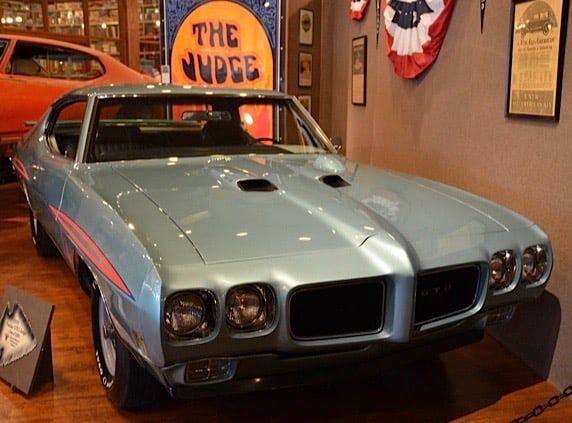It all starts with the horse and buggy. In 1893, Edward Murphy founded the Pontiac Buggy Company in Pontiac, Michigan. Murphy then started the Oakland Motor Car Company in 1907, Oakland being the name of the county in which Pontiac was situated. Not long thereafter, Oakland was purchased by and eventually absorbed into General Motors.
The Pontiac brand came along in 1926 as a new line of cars priced below the Oakland but above Chevrolet. After the Great Depression hit in 1931, the Oakland brand was discontinued due to its higher price. Pontiac continued through the decades but it, too, is gone from the automotive production landscape as a result of GM’s restructuring in 2008. The last Pontiacs were 2010 models that rolled off the assembly line in the fall of 2009.
The Pontiac – Oakland Museum located in Pontiac, Illinois opened about five years ago in 2011. The museum has as its mission to preserve, exhibit and maintain Pontiac and Oakland automobiles and related artifacts. Tim Dye, the museum’s founder, was inspired to create the museum as a direct result of the demise of Pontiac automobiles.
Tim has been a Pontiac owner and enthusiast for over four decades. Formerly from Broken Arrow, Oklahoma, he and his wife moved to Pontiac, Ilinois when one thing led to another, and the museum came into being.
The fact that the museum is located in the Pontiac of Illinois and not in the Pontiac of Michigan may be a bit of a curiosity. Located off of I-55, and coincidentally along old Route 66, the museum is the outcome of the collaboration between Dye and Pontiac’s mayor, Robert Russell. Pontiac already had a large Route 66 Museum and this new museum figured to attract additional visitors.
At the museum’s opening Dee Whiteye Singingbird, a descendent of Chief Pontiac, spoke to the audience. Pontiac became chief of the Ottawa Indian tribe in 1755 and helped in fights against the British in the Great Lakes Region.
Today, vehicles displayed in the museum range from a Pontiac horse-drawn buggy dating from the 1890s to a number of Oakland cars from early last century, and to Pontiac models from the ‘60s and ‘70s including examples of the famed GTO, Firebird and Fiero.
Dye tries to keep the museum interesting and regularly rotates new cars onto display. There are 18 cars on display and about 80 percent of them change throughout the year.
Greeting you as you enter the front door is Dye’s recently restored 1970 Pontiac GTO Judge, one of 3,629 built. Nearby is a ’69 GTO Judge Ram Air IV with a fully restored chassis and drivetrain. It’s yet to be restored body in the original Carousel Red as it was found in a field in Idaho is displayed above it.
One of my favorites is the ’61 Pontiac Ventura with a dual-quad 421-cube engine owned by Jerry and Kathy Papesh of Channahon, Illinois. The Ventura was a favorite because of its sporty trim and yet was not as big as the more flashy Bonneville models.
A pair of Firebirds includes a ’76 Trans-Am 50th Anniversary edition that is known for lots of horsepower and its large Firebird hood ornamentation.
Pontiacs were distinguished by Silver Streak chrome trim down the hood. Sometimes with one and then two, the chrome trim appeared on the brand’s cars until 1956. The first Pontiac to use this trim was the 1935 Improved Eight Touring Sedan like the one displayed at the museum. A few Oakland cars are on view including a 1931 Sport Coupe from the last year of Oakland production.
The museum is also a resource center and features a well organized library that houses thousands of pieces of Pontiac and Oakland literature. There are showroom brochures, shop manuals, technical bulletins, parts manuals, press releases, enthusiast publications and the like. The museum accepts research requests through their website that allows Pontiac and Oakland owners, enthusiast and collectors to find information about a specific vehicle.
Dye also has a unique collection of quart oil cans that number somewhere around 3,500, with not many alike. Some have unique markings and labeling from throughout the 20th century. There also is Pontiac automobilia including scale models, promotional license plates, lots of wheel covers, and more.
The museum is not all Dye has in the way of Pontiac history. He and his wife have 51 cars and a garage to enable repair and the storage of various pieces and parts.
Dye has acquaintances with many folk who played a role in the history of Pontiac including Jim Wangers, known as the father of the GTO, Bill Porter who was head of Pontiac Design for many years and drag racing great Arnie Beswick.
About 20,000 folks visit the museum each year. You can find more information and plan a visit to the Pontiac-Oakland museum at its website.
Photos by Larry Nutson





